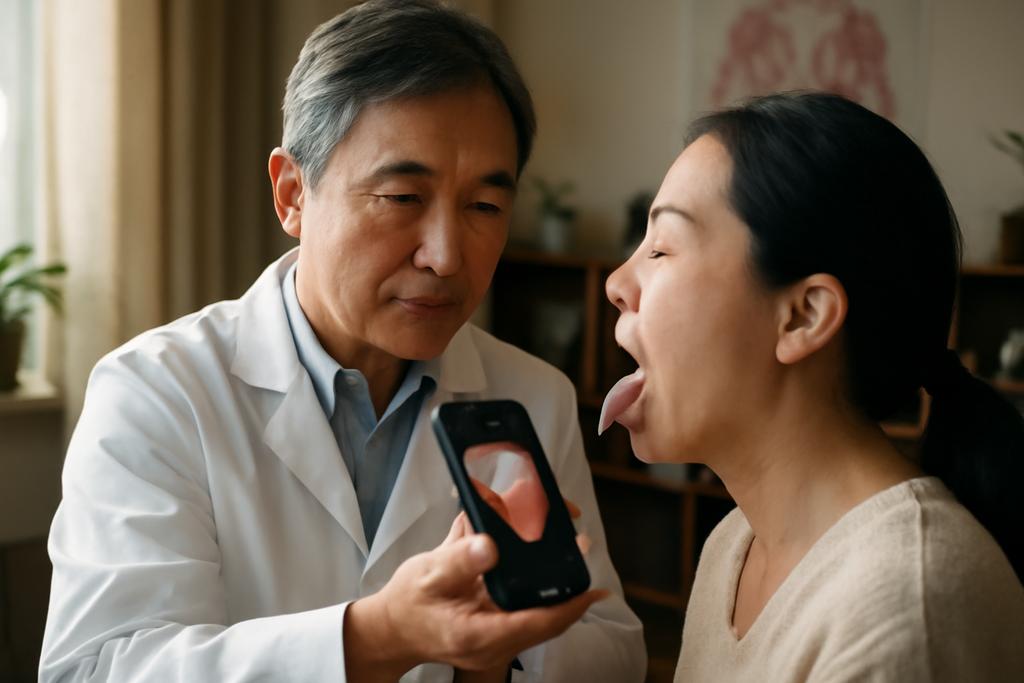Decoding the Secrets of the Tongue: AI Meets Traditional Chinese Medicine
For centuries, Traditional Chinese Medicine (TCM) has relied on the meticulous observation of the tongue to diagnose illness. A practitioner’s trained eye, interpreting subtle variations in color, texture, and coating, can reveal a wealth of information about the body’s internal state. This ancient art, however, has a significant limitation: it’s inherently subjective. What one practitioner sees as a sign of heat, another might interpret differently. This variability hampers the consistency and scalability of TCM diagnosis.
Enter the Age of AI-Assisted TCM
Now, researchers are leveraging the power of artificial intelligence to bridge this gap. By training algorithms on vast quantities of standardized tongue images, they aim to create objective, replicable diagnostic tools. But a significant hurdle has remained: the lack of a large, expertly annotated dataset. Without such a resource, AI models can’t learn effectively, and the potential of computational TCM diagnosis remains unrealized.
TCM-Tongue: A Groundbreaking Dataset
This is where the TCM-Tongue dataset, created by researchers at the School of Computer and Artificial Intelligence, Beijing Technology and Business University, and led by Jianlei Kong and Ning Sun, steps in. This unprecedented collection of 6,719 high-quality tongue images marks a pivotal moment for the field. Each image has been meticulously annotated by licensed TCM practitioners, capturing the nuances of twenty distinct pathological symptom categories. The average image carries 2.54 clinically validated labels, a level of detail unheard of in previous datasets.
The dataset’s creators didn’t just collect images; they meticulously standardized the image acquisition process. A specialized hardware system ensures consistency in lighting, camera angles, and color calibration, minimizing the noise that plagues less controlled datasets. This rigorous approach is crucial, as subtle color gradations and texture variations are vital diagnostic clues in TCM.
Bridging Ancient Wisdom and Modern Technology
The TCM-Tongue dataset isn’t merely a collection of pictures; it’s a bridge between two distinct worlds: the millennia-old tradition of TCM tongue diagnosis and the cutting-edge technology of AI. The researchers cleverly designed their annotation framework to align with both TCM theory and the technical requirements of modern deep learning models. This ensures that the resulting AI systems not only deliver accurate results but also respect the rich intellectual heritage of TCM.
Testing the Waters: Deep Learning Models Put to the Test
To demonstrate the dataset’s utility, the researchers tested several popular deep learning models for object detection, including YOLOv5, YOLOv7, YOLOv8, SSD, and MobileNetV2. Their findings reveal some interesting insights. Contrary to expectations, increasing model complexity didn’t always translate to improved accuracy. The relatively smaller size of the TCM-Tongue dataset, compared to massive benchmarks like COCO, caused larger models to overfit—memorizing the training data instead of learning generalizable patterns. This highlights a crucial point: the most powerful tools aren’t always the most effective for every task.
Interestingly, some lighter-weight models performed remarkably well. YOLOv8s, for example, struck an excellent balance between accuracy and computational efficiency. This bodes well for practical applications, where processing power might be limited, such as in portable diagnostic devices or remote healthcare settings.
Beyond the Numbers: The Broader Significance
The creation of the TCM-Tongue dataset has far-reaching implications. It’s not just a boon for TCM research; it’s a testament to the power of AI to integrate and enhance diverse medical traditions. For too long, AI in healthcare has been predominantly focused on Western biomedicine. This project demonstrates how AI can be adapted to handle the subtleties and complexities of other diagnostic systems, potentially revolutionizing healthcare globally.
Imagine a future where AI-powered diagnostic tools are readily available, assisting TCM practitioners in their work and ensuring greater consistency and accuracy. Such technology could lead to earlier diagnosis, more effective treatment plans, and improved patient outcomes. The TCM-Tongue dataset is a significant step toward this future, a testament to the power of interdisciplinary collaboration and the potential of AI to amplify human expertise.
The Future is Now
The researchers’ work is not just about building a dataset; it’s about building bridges. The TCM-Tongue dataset fosters collaboration between traditional medicine practitioners and AI researchers. It opens a pathway for cross-cultural dialogue and shared learning, potentially leading to transformative advancements in global healthcare. The dataset, publicly available, invites researchers worldwide to build on this foundation, developing increasingly sophisticated AI systems for TCM tongue diagnosis and exploring other areas where traditional medical knowledge can meet modern technology.










